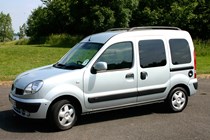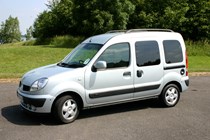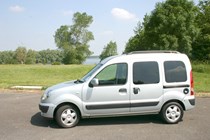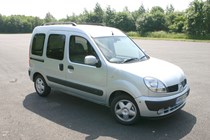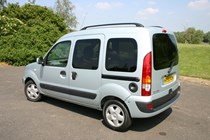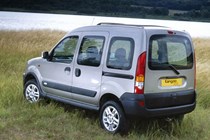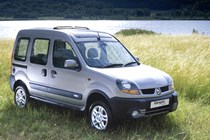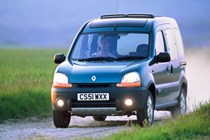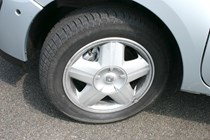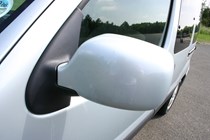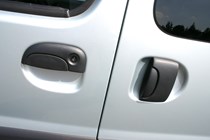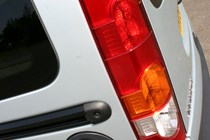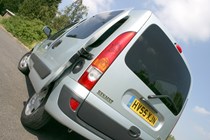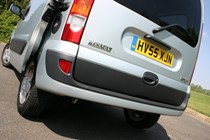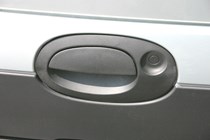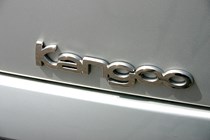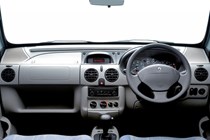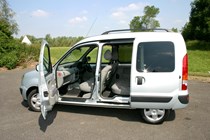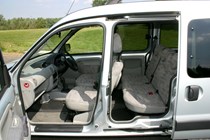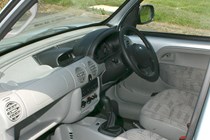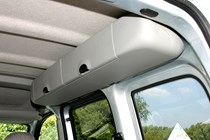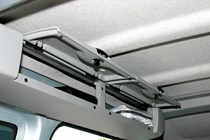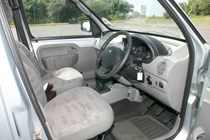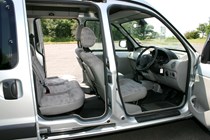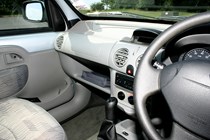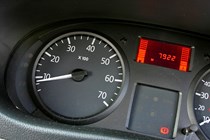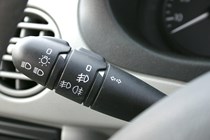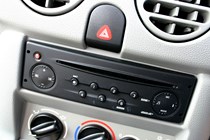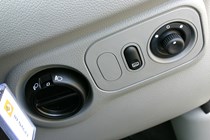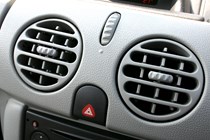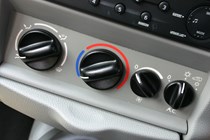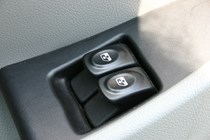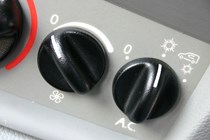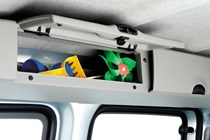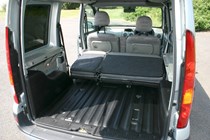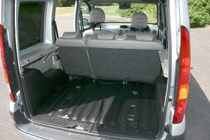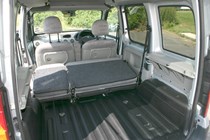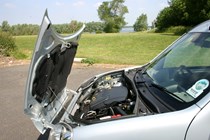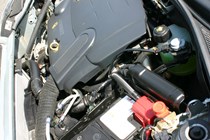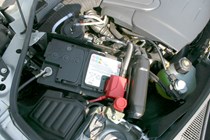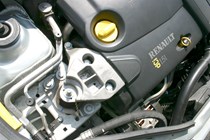
Renault Kangoo Estate (1999-2008) boot space, practicality and safety
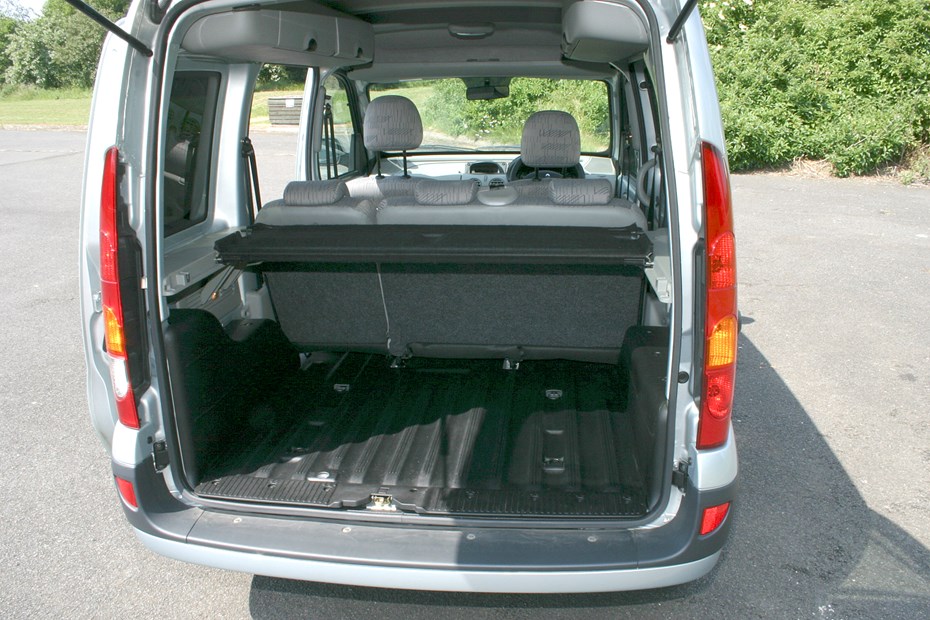
The Kangoo scored well in the Euro NCAP occupant crash test, with a commendable four-star rating, but didn’t perform as well in the pedestrian tests, due to the lack of frontal cushioning. This means that there’s inadequate protection in collisions for pedestrians, due to the hard bonnet and front edge. On the inside, there are dual front airbags as standard, while additional airbags are available as an option.
Original base models lack ABS, which is concerning, but all models are now fitted with this. All models have an immobiliser fitted, but there is no alarm. Thieves shouldn’t target Kangoos, though an alarm may reassure insurance companies.
The high roof ensures that there is sufficient headroom – even for the tallest of drivers – easing access to seating throughout and accommodating a storage shelf that runs the width of the cabin above the driver’s head. In the rear, the parallel overhead storage compartments – similar to those found in aeroplanes – make efficient use of the height, keeping valuables out of harm’s way and maintaining rearward visibility for the driver.
Unfortunately, they cannot accommodate much more than a lunchbox and a few schoolbooks per cupboard, so thick winter coats or bulky items are not recommended. Located on the back of the front seats, the fold-up table and storage pouches are useful for the kids to read and store their magazines. The sliding rear doors are superb for car parks, making light work of strapping the children in without having to perform acrobatics.
The 60/40 split folding rear seats are great for storing longer items or increasing the boot capacity, but do not fold completely flat.
Equipment and options
- Cloth seat trim
- Driver`s airbag
- Folding rear seats
- PAS
- Air conditioning
- Audio remote
- Front fog lights
- Metallic Paint
- Remote locking
- Steel wheels
- n/a
- 3x3 point rear seat belts
- Passenger`s airbag
- Remote locking
- Steel wheels
- ABS
- Audio remote
- CD
- Electric mirrors
- Front fog lights
- Full size spare wheel
- Heated mirrors
- Isofix child seat anchor points
- Lumbar support
- 3x3 point rear seat belts
- ABS
- Audio remote
- Body coloured bumpers
- CD
- Electric mirrors
- Front electric windows
- Front fog lights
- Full size spare wheel
- Heated mirrors
- Isofix child seat anchor points
- Passenger`s airbag
- Remote locking
- Steel wheels
- Audio remote
- Electric sunroof
- Front fog lights
- Manual sunroof
- Metallic Paint
- Remote locking
- Steel wheels
- ABS
- Audio remote
- Metallic Paint
- Steel wheels
- ABS
- 3x3 point rear seat belts
- Audio remote
- Electric mirrors
- Front electric windows
- Front fog lights
- Heated mirrors
- Isofix child seat anchor points
- Metallic Paint
- Passenger`s airbag
- Remote locking
- Steel wheels
- ABS
- 3x3 point rear seat belts
- ABS
- Audio remote
- Electric mirrors
- Front electric windows
- Front fog lights
- Heated mirrors
- Isofix child seat anchor points
- Passenger`s airbag
- Remote locking
- CD
- Electric passenger`s seat
- Full size spare wheel
- Height adjustable drivers seat
- Metallic Paint
- 3x3 point rear seat belts
- ABS
- Audio remote
- Body coloured bumpers
- CD
- Front electric windows
- Full size spare wheel
- Isofix child seat anchor points
- Passenger`s airbag
- Remote locking
- Steel wheels
- Roof rails
Dimensions
| Length | 3395mm - 4046mm |
|---|---|
| Width | 2030mm - 2060mm |
| Height | 1800mm - 1890mm |


